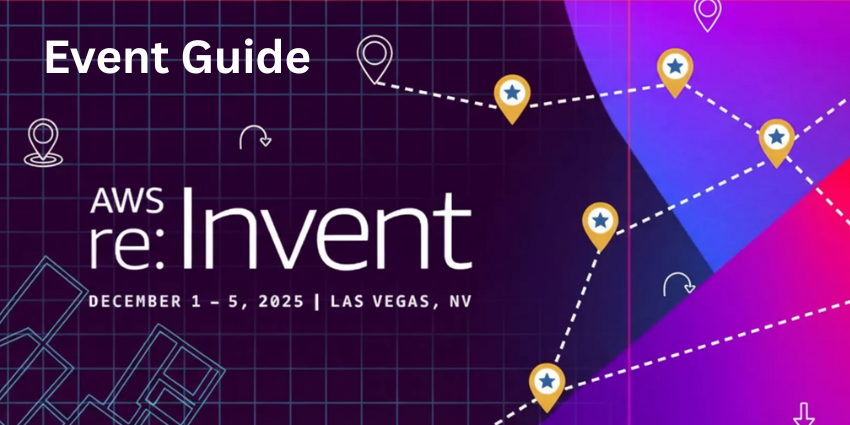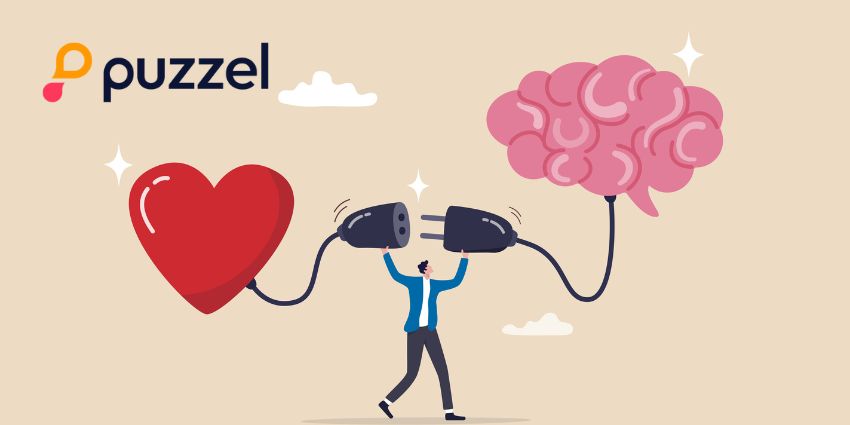AI is sparking the next technological revolution.
Consider the last revolution, driven by the internet. That happened in the 1990s.
Back then, businesses had to adapt, build websites, and move online.
But, beyond that, the internet fundamentally changed how companies operated.
Some failed to move with the times. Others, like Amazon, Netflix, and Google, emerged as dominant players in their respective markets.
AI presents a similar disruptive force. Those organizations that fail to grab the bull by the horns and invest may suffer a similar fate to the likes of Blockbuster, Kodak, and Xerox.
Shareholders recognize this, and function leaders are under pressure from their boards to integrate AI into their businesses.
Indeed, a recent survey by Dataiku found that 74 percent of CEOs believe they could lose their jobs within two years if they fail to deliver meaningful AI-driven improvements.
As they assess these meaningful improvements, customer service is proving a rich area for AI to deliver tangible value.
Yet, it’s not all about automating conversations. In the customer service, AI supports reps in the flow of their work, delivers new insight, and assists with resource planning.
These use cases represent opportunities to not only reduce costs but also increase revenues.
Shrewd investment in such use cases may deliver significant ROI.
Meanwhile, those businesses that look beyond these opportunities may miss out on massive cost savings – as NICE’s new AI Value Calculator outlines.
The AI Value Calculator: Estimating the Costs of Not Investing In Customer Service AI and Automation
The AI Value Calculator estimates how much money and time customer service could save by implementing the AI solutions offered by NICE.
In doing so, it also underscores how much they might squander by not doing so.
How does it work? Well, the solution creates a rough calculation in just minutes. Users only have to input a few key data points. These cover location, team size, average handling time, contact volumes, average wrap time, salaries, and industry.
Additionally, users may set a target for the percentage of interactions they aspire to automate.
From there, the Value Calculator makes its estimate, which – while not completely accurate – will help open the eyes of business leaders to the possible savings AI may deliver.
“Our approach is based on data,” explained Alan Walsh, Portfolio Value Principal at NICE.
“NICE have the world’s largest domain-specific database of customer interactions, billions of recorded (and anonymized) interactions. That gives us deep insights into what happens during calls and what kind of improvements AI can realistically deliver.”
Moreover, the calculator utilizes default industry benchmarks, so users receive an initial estimate even if they don’t have their own data readily available.
“We took a conservative approach to ensure credibility,” continued Walsh.
“For example, while the industry average call center attrition rate is 42 percent, we use a more modest 30 percent in the calculator. We wanted to be realistic and avoid over-promising results.”
Overall, the Value Calculator is grounded in real-world data and customer case studies. However, businesses should contact NICE directly for a deeper review and more accurate projection.
Wait… So, How Does Customer Service AI and Automation Save Me Money?
The AI Value Calculator considers various applications of customer service AI to generate its output.
These applications aim to cut costs, generate revenue, and sometimes both.
Given this, let’s consider some opportunities to achieve those first two objectives.
Opportunities to Cut Costs with Customer Service AI
Customer service can cut costs in two primary ways: lowering contact volumes and durations.
The key is to achieve these objectives without obstructing the customer or employee experience.
Another tactic is to deflect customers onto cheaper channels, typically from voice to live chat. Yet, that’s unlikely to be customer-friendly.
So, let’s focus on those first two goals and consider the possible AI applications that may reduce expenses without negative effects.
Support Agents with a Copilot
Agent copilots surface relevant knowledge and data for reps in real time, so they spend less time shifting between systems.
These virtual assistants may also grab vital customer context before the conversation begins, auto-draft responses on digital channels, and offer real-time coaching.
Yet, for Sue Bolt, International Presales Director of Workforce Augmentation & AI at NICE, another use case is proving a “game changer”: automating post-contact processing.
“NICE Autosummary reduces administrative workload, allowing agents to focus on conversations rather than note-taking,” said Bolt.
“AI captures key details and sentiment, generating standardized summaries that integrate into the CRM. This improves efficiency, accuracy, and continuity in future interactions.”
Don’t Forget About Supervisors!
Alongside NICE CXone Mpower Copilot for agents, copilots for supervisors are coming to the fore with several exciting use cases.
For instance, a copilot purpose-built for supervisors can alert the team leader to live contacts where an agent seems to be struggling. From there, they can “whisper” advice or “barge” into the conversation to provide an invaluable real-time support mechanism and avoid never-ending interactions.
Additionally, a copilot may allow supervisors to ask questions of agent performance data to extrapolate actionable insight on an individual and team level.
Help Customers to Solve Their Problems Autonomously
AI agents are more advanced than 12 months ago. Now, they can autonomously engage in customer conversations without prior training, thanks to advancements in generative and agentic AI.
Of course, they must seamlessly connect to company knowledge and data sources. Meanwhile, ensuring appropriate guardrails – so they only respond to specific, tested intents – remains critical.
Nevertheless, the barrier to entry for conversation automation has collapsed.
Still, some intents may prove too complex for automation. But, even here, AI agents can help by gathering information from customers as they wait in queue.
With this use case alone, customer service can strike 45 seconds from every live customer conversation. That adds up!
Monitor Customer Contact More Accurately
AI-driven WFM tools can predict call spikes, analyze disparate data sources, and detect patterns.
For instance, they may help a customer service detect a surge in a specific contact reason, like a network outage.
Access to this real-time data allows leaders to make informed staffing decisions quickly and avoid panicked overstaffing.
Address Those Attrition Issues
As Walsh suggested, the average agent attrition rate across the customer service industry is 42 percent.
Contact centers with such high churn rates spend lots of money recruiting, onboarding, and building agent proficiency.
AI can help to keep agents engaged with real-time support and feedback. It also spots warning signs – such as spells of low agent sentiment – that customer service leaders can address to avoid attrition.
Analytics systems may also be able to track trends in attrition rates, helping to isolate root causes.
Opportunities to Increase Revenues with Customer Service AI and automation
Many only consider customer service AI through the lens of automation and cost savings.
Yet, as AI takes up that busy work and connects workflows through automation, more service operations may evolve into profit centers.
There, agents will do more than solve problems; they’ll drive revenue.
AI will also prove a powerful aid in assisting customer service organizations through this transition, as exemplified by the two opportunities below.
Get More Strategic Around Customer Intent
Some conversations are easy to automate but should be left for a human instead. Why? Because they present an opportunity to grow the relationship.
As such, customer service may wish to leverage AI-powered conversational intelligence tools to assess their top intents and consider the opportunities for humans to add value.
Customer service leaders can then orchestrate an experience that marries AI and live agents to drive efficiency and effectiveness.
Upsell/Cross-Sell Triggers
When purpose-built for CX, and available in a platform ecosystem, Agent copilots can – during live customer conversations – pick up on signs that customers may be open to an upsell or cross-sell and prompt the agent.
Yet, there are also other triggers customer service can pick up on. For instance, if the customer is dwelling on a particular website page, they may – via a live chat pop-up – offer a proactive service experience to secure their business.
Meanwhile, AI can analyze data to add customers to appropriate outbound calling campaigns and drive revenue.
Final Thoughts: AI Investment Is Table Stakes. Customer Service is Priority One.
Every revolution has winners and losers. The companies that failed to adapt to the internet disappeared, while new leaders emerged.
“Organizations are at a similar turning point now, and companies that fail to embrace AI could face extinction,” summarized Walsh.
Indeed, experts already predict the next revolution – quantum computing and nanotechnology – will come even faster. The cycles of transformation are shortening, and businesses that hesitate risk being left behind.
Given this, many businesses face pressure to implement AI and have isolated customer service as patient zero.
Why? A cynic may suggest many have long viewed service operations as “cost centers”.
Meanwhile, they may view automating support less risky than other front-office functions, like commerce, marketing, and sales.
Nevertheless, the key point is that AI is nothing new in customer service. Agent-assist, conversational intelligence, workflow automation, and workforce optimization technologies are long proven to drive significant ROI – as the AI Value Calculator underlines.
Discover more about NICE’s AI platform for customer service automation and its capabilities shared in this article. Visit: nice.com







